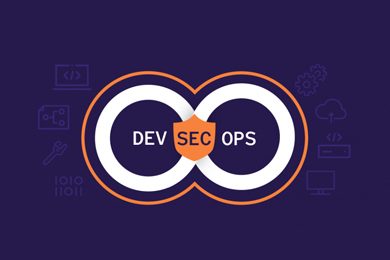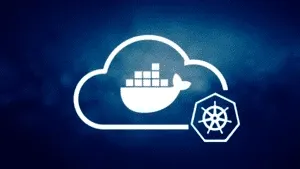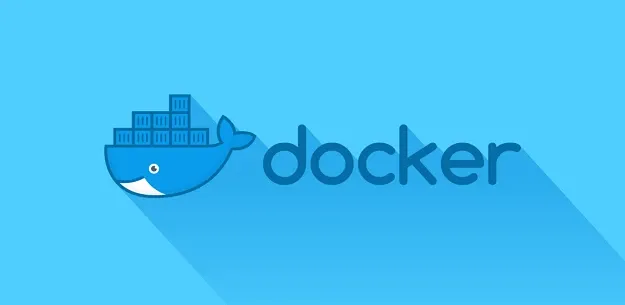This plan includes
- Limited free courses access
- Play & Pause Course Videos
- Video Recorded Lectures
- Learn on Mobile/PC/Tablet
- Quizzes and Real Projects
- Lifetime Course Certificate
- Email & Chat Support
What you'll learn?
- What is DevOps Vs DevSecOps
- Linux/Unix For DevOps and Developers
- Learn Python From the Scratch
- Make your own Ethical Hacking Tools In Python
- Learn Cloud Services - AWS (Amazon Web Services)
- Learn Continuous Integration And Continuous Delivery CI/CD - Jenkins
- Learn Containerization Technology - Docker
- Learn IAC (Infrastructure As Code) - AWS Cloud Formation
- Learn IAC (Infrastructure As Code) - Terraform
- Learn Continuous Monitoring - AWS CloudWatch
- Learn Cyber Security Threats and the Best Practices
- Learn Soft Skills for DevOps
- Real World Scenarios with Practice Step-By-Step
Course Overview
DevOps is a combination of software development and information technology operations that enables businesses to deliver applications at a faster pace. It brings together development and operations teams so there are fewer redundancies in the software development process.
DevSecOps is a culture shift in the software industry that aims to bake security into the rapid-release cycles that are typical of modern application development and deployment.
DevOps has revolutionized workplaces in many ways. The number of DevOps-related jobs are increasing, while its rank as an in-demand job.
DevOps is important because it's a software development and operations approach that enables faster development of new products and easier maintenance of existing deployments.
In this Course you will learn all the needed DevOps/DevSecOps Skills and Tools needed for your Career You will learn all of the Below in one Course Only (This Ultimate Course):
-
What is DevOps Vs DevSecOps
-
Linux/Unix For DevOps and Developers
-
Learn Python From the Scratch
-
Make your own Ethical Hacking Tools In Python
-
Learn Cloud Services - AWS (Amazon Web Services)
-
Learn Continuous Integration And Continuous Delivery CI/CD - Jenkins
-
Learn Containerization Technology - Docker
-
Learn IAC (Infrastructure As Code) - AWS Cloud Formation
-
Learn IAC (Infrastructure As Code) - Terraform
-
Learn Continuous Monitoring - AWS CloudWatch
-
Learn Cyber Security Threats and the Best Practices
-
Learn Soft Skills for DevOps
-
Real World Scenarios with Practice Step-By-Step
Pre-requisites
- Eager to Learn and Patience !!!
Target Audience
- DevSecOps Engineers
- DevOps Engineers
- Cyber Security Engineers
- Developers
- Software Engineers
- IT Managers
Curriculum 254 Lectures 00:45:38
Section 1 : Introduction
- Lecture 2 :
- Devops_Vs_DevSecOps
- Lecture 3 :
- What is Dev-Sec-Ops (Red Hat)
- Lecture 4 :
- DevOps (Wikipedia)
- Lecture 5 :
- DevOps Breaking the Development Operations barrier (Atlassian)
Section 2 : LInux Unix for Devops and Developer
- Lecture 1 :
- Linux Section Outline
- Lecture 2 :
- Introduction Lectures
- Lecture 3 :
- History of Unix
- Lecture 4 :
- linux vs Unix
- Lecture 5 :
- Then What is GNU Linux
- Lecture 6 :
- What is Linux Distributions
- Lecture 7 :
- Unix Architecture
- Lecture 8 :
- Linux Fundamentals Lectures
- Lecture 9 :
- IMPORTANT NOTE
- Lecture 10 :
- Linux Directory Structure Theory
- Lecture 11 :
- The Shell Theory
- Lecture 12 :
- Basic Linux Commands Theory
- Lecture 13 :
- Basic Linux Commands Hands-On
- Lecture 14 :
- Working with Directories Theory
- Lecture 15 :
- Working with Directories Hands-On
- Lecture 16 :
- Listing Files and Understanding ls Output Theory
- Lecture 17 :
- Listing Files and Understanding ls Output Hands-On
- Lecture 18 :
- Links and Shortcuts in Linux Theory
- Lecture 19 :
- Links and Shortcuts in Linux Honds-On
- Lecture 20 :
- File and Directory Permissions Theory
- Lecture 21 :
- File and Directory Permissions Hands-On
- Lecture 22 :
- Finding Files and Directories Hands-On
- Lecture 23 :
- Viewing Files and the Nano Editor Theory
- Lecture 24 :
- Viewing Files and the Nano Editor Hands-On
- Lecture 25 :
- Editing Files in Vi/Vim Theory
- Lecture 26 :
- Editing Files in Vi/Vim Hands-On
- Lecture 27 :
- Linux copy move commands Hands-On
- Lecture 28 :
- Intermediate Linux Skills
- Lecture 29 :
- Input Output and Redirection Theory
- Lecture 30 :
- Linux Redirection Hands-On
- Lecture 31 :
- Linux Comparing Files Hands-On
- Lecture 32 :
- Linux Transfer Files Over Network
- Lecture 33 :
- Shell Aliases Theory
- Lecture 34 :
- Shell Aliases Hands-On
- Lecture 35 :
- Linux Environment Variable Hands-On
- Lecture 36 :
- Processes and Job Control Theory
- Lecture 37 :
- Processes and Job Control Hands-On
- Lecture 38 :
- Scheduling Repeated Jobs with Cron Theory
- Lecture 39 :
- Scheduling Repeated Jobs with Cron Hands-On
- Lecture 40 :
- Linux History Hands-On
- Lecture 41 :
- Linux Sudo Another Users Hands-On
- Lecture 42 :
- Linux Users Management Hands-On
- Lecture 43 :
- The Linux Boot Process
- Lecture 44 :
- Linux File System Hands-On
- Lecture 45 :
- What is Shell Scripting
- Lecture 46 :
- Linux Var Special
- Lecture 47 :
- Linux Operators
- Lecture 48 :
- Linux if else Case
- Lecture 49 :
- Linux Loops
- Lecture 50 :
- Linux Functions
Section 3 : Python for Ethical Hackers
- Lecture 1 :
- IMPORTANT NOTE
- Lecture 2 :
- Section Outline
- Lecture 3 :
- What is Ethical Hacking
- Lecture 4 :
- What is Python and why to use it in Security
- Lecture 5 :
- Install Python
- Lecture 6 :
- Hello World
- Lecture 7 :
- Data Types
- Lecture 8 :
- Numbers
- Lecture 9 :
- Math functions
- Lecture 10 :
- Operator Precedence
- Lecture 11 :
- Variables
- Lecture 12 :
- Strings
- Lecture 13 :
- Strings Concatenate
- Lecture 14 :
- Types conversion
- Lecture 15 :
- escape sequence
- Lecture 16 :
- formated strings
- Lecture 17 :
- Strings indexes
- Lecture 18 :
- boolean
- Lecture 19 :
- Lists
- Lecture 20 :
- List Methods
- Lecture 21 :
- Matrix
- Lecture 22 :
- None
- Lecture 23 :
- Dictionery
- Lecture 24 :
- Dictionery Methods
- Lecture 25 :
- tuple
- Lecture 26 :
- Conditional If Else
- Lecture 27 :
- For loop
- Lecture 28 :
- While
- Lecture 29 :
- break continue pass
- Lecture 30 :
- Functions
- Lecture 31 :
- args kwargs
- Lecture 32 :
- Packages in Python
- Lecture 33 :
- Error Handling
- Lecture 34 :
- Input/Output IO
- Lecture 35 :
- IO Error Handling
- Lecture 36 :
- Python_Coding_Project_#1_Port Scanner
- Lecture 37 :
- What is Port Scanner and how it works
- Lecture 38 :
- IMPORTANT NOTE
- Lecture 39 :
- Build your Own Port Scanner
- Lecture 40 :
- Python Coding Project #2 Web App Directory Discovery
- Lecture 41 :
- IMPORTANT NOTE
- Lecture 42 :
- Build Your Own Directory Discovery
- Lecture 43 :
- Python_Coding_Project_#3_Web_App_Login Brute-Force
- Lecture 44 :
- What is Brute Force Attack
- Lecture 45 :
- Types of Brute Force Attacks
- Lecture 46 :
- IMPORTANT NOTE
- Lecture 47 :
- Brute login
Section 4 : AWS for DevOps
- Lecture 1 :
- What is AWS and Why To?
- Lecture 2 :
- EC2 Overview
- Lecture 3 :
- EC2 Launch Your First Instance
- Lecture 4 :
- EC2 more Option
- Lecture 5 :
- EC2 AMI
- Lecture 6 :
- EC2 EBS
- Lecture 7 :
- EC2 EBS Snapshots
- Lecture 8 :
- EC2 Placment group
- Lecture 9 :
- EC2 KeyPairs
- Lecture 10 :
- EC2 Network Interfaces
- Lecture 11 :
- ASG Overview
- Lecture 12 :
- ASG Lanuch configuration
- Lecture 13 :
- ASG Create ASG Groups
- Lecture 14 :
- ELB Overview
- Lecture 15 :
- ELB Classic
- Lecture 16 :
- ELB Target groups
- Lecture 17 :
- ELB Network LB
- Lecture 18 :
- ELB Application LB
- Lecture 19 :
- S3 Overview
- Lecture 20 :
- S3 Create your first
- Lecture 21 :
- S3 Versioning
- Lecture 22 :
- S3 Access logging
- Lecture 23 :
- S3 Permission
- Lecture 24 :
- S3 encryption
- Lecture 25 :
- S3 events
- Lecture 26 :
- S3 Managment
- Lecture 27 :
- S3 Host static website
- Lecture 28 :
- S3 CloudFront
- Lecture 29 :
- VPC overview
- Lecture 30 :
- Create your first VPC
- Lecture 31 :
- VPC Subnets
- Lecture 32 :
- Elastic IP
- Lecture 33 :
- VPC Route Tables
- Lecture 34 :
- VPC Internet Gateway
- Lecture 35 :
- VPC NAT
- Lecture 36 :
- VPC Egress Only
- Lecture 37 :
- VPC ACL
- Lecture 38 :
- VPC Security Group
- Lecture 39 :
- VPC Peering
- Lecture 40 :
- IAM Overview
- Lecture 41 :
- IAM Users
- Lecture 42 :
- IAM Groups
- Lecture 43 :
- IAM Roles
- Lecture 44 :
- IAM Custom Policy
- Lecture 45 :
- Route53 Overview
- Lecture 46 :
- Route53 Register Domain
- Lecture 47 :
- Route53 HostedZones
- Lecture 48 :
- Route53 HealthCheck
Section 5 : Jenkins CI CD
- Lecture 1 :
- What is CI CD?
- Lecture 2 :
- What is Jenkins and Why
- Lecture 3 :
- Install Jenkins
- Lecture 4 :
- Create Jenkins job
- Lecture 5 :
- Job General
- Lecture 6 :
- Job SCM
- Lecture 7 :
- Job Triggers
- Lecture 8 :
- Job Environment
- Lecture 9 :
- Job Build
- Lecture 10 :
- Job Post Build
- Lecture 11 :
- Job Views
- Lecture 12 :
- Managements System Information
- Lecture 13 :
- Managements System Logs
- Lecture 14 :
- Management Global tool
- Lecture 15 :
- Managements Configure system
- Lecture 16 :
- Managments Plugin
- Lecture 17 :
- Managements Users
- Lecture 18 :
- Managments Security
- Lecture 19 :
- Managments Credentials
- Lecture 20 :
- Management Nodes
Section 6 : Containerization Technology - Docker
- Lecture 1 :
- What is Docker and Why
- Lecture 2 :
- How Docker works Architecture
- Lecture 3 :
- VM vs Containers
- Lecture 4 :
- Install Docker On Linux
- Lecture 5 :
- Install Docker On MAC
- Lecture 6 :
- Docker Overview
- Lecture 7 :
- Docker Engine
- Lecture 8 :
- Docker Containers
- Lecture 9 :
- Docker Storage
- Lecture 10 :
- Docker Networking
- Lecture 11 :
- Docker Commands Overview
- Lecture 12 :
- Dockerfile Basics
- Lecture 13 :
- Compose Basics
- Lecture 14 :
- Hello World Container
- Lecture 15 :
- Ubuntu Container
- Lecture 16 :
- Containers Management
- Lecture 17 :
- Images Management
- Lecture 18 :
- Our first Nginx Container
- Lecture 19 :
- Nginx Custom
- Lecture 20 :
- Dockerfile part1
- Lecture 21 :
- Dockerfile part2
- Lecture 22 :
- compose INTRO
- Lecture 23 :
- compose YAML Syntax
- Lecture 24 :
- compose app py file
- Lecture 25 :
- compose Dockerfile
- Lecture 26 :
- compose docker app py
- Lecture 27 :
- compose up
- Lecture 28 :
- compose bind mount
- Lecture 29 :
- compose more option
Section 7 : IAC AWS CloudFormation
- Lecture 1 :
- What is IAC (Infrastructure As Code)
- Lecture 2 :
- CloudFormation Overview
- Lecture 3 :
- YAML Syntax
- Lecture 4 :
- CloudFormation Create Stack
- Lecture 5 :
- CloudFormation Update Delete stack
- Lecture 6 :
- CloudFormation Parameters
- Lecture 7 :
- CloudFormation Resources
- Lecture 8 :
- CloudFormation Mapping
- Lecture 9 :
- CloudFormation Outputs
- Lecture 10 :
- CloudFormation Conditions
- Lecture 11 :
- Cloudformation Internsic Function
- Lecture 12 :
- CloudFormation User data
- Lecture 13 :
- CloudFormation cfn init
- Lecture 14 :
- CloudFormation cfn Signal
- Lecture 15 :
- CloudFormation RollBack
- Lecture 16 :
- CloudFormation Nested
- Lecture 17 :
- CloudFormation Change sets
- Lecture 18 :
- CloudFormation DependsOn
- Lecture 19 :
- CloudFormation Drift detect
Section 8 : Continuous Monitoring AWS CloudWatch
- Lecture 1 :
- CloudWatch Overview
- Lecture 2 :
- CloudWatch Default Metrics
- Lecture 3 :
- CloudWatch Custom Metrics
- Lecture 4 :
- CloudWatch Alarms
- Lecture 5 :
- CloudWatch Billing Alarms
- Lecture 6 :
- CloudWatch Logs Overview
- Lecture 7 :
- CloudWatch Logs Custom
- Lecture 8 :
- CloudWatch Logs Filters and alarm
- Lecture 9 :
- CloudWatch Events
- Lecture 10 :
- CloudWatch DashBoards
Section 9 : Cyber Security Threats and the Best Practices
- Lecture 1 :
- What is Cyber Security
- Lecture 2 :
- 10_practicies
- Lecture 3 :
- Cyber Security Careers
- Lecture 4 :
- Top 10 Cyber Threats
Section 10 : Soft Skills for DevOps
- Lecture 1 :
- What are Soft Skill
- Lecture 2 :
- Hard Skills Vs Soft Skills
- Lecture 3 :
- Why Soft Skills and 10 Important Skills
- Lecture 4 :
- Communication
- Lecture 5 :
- TeamWork
- Lecture 6 :
- Adaptability
- Lecture 7 :
- Problem Solving
- Lecture 8 :
- Creativity
- Lecture 9 :
- Work Ethic
- Lecture 10 :
- Interpersonal Skills
- Lecture 11 :
- Time Management
- Lecture 12 :
- Leadership
- Lecture 13 :
- Attention To Detail
Section 11 : Jenkins Github and AWS In Practice
- Lecture 1 :
- What are we going to build (Diagram)
- Lecture 2 :
- VPC And Subnets
- Lecture 3 :
- IGW and NAT
- Lecture 4 :
- Install VPN
- Lecture 5 :
- Setup VPN
- Lecture 6 :
- Install Jenkins
- Lecture 7 :
- Jenkins URL
- Lecture 8 :
- Integrate Jenkins GitHub Part1
- Lecture 9 :
- Integrate Jenkins GitHub Part2
Our learners work at
Frequently Asked Questions
How do i access the course after purchase?
It's simple. When you sign up, you'll immediately have unlimited viewing of thousands of expert courses, paths to guide your learning, tools to measure your skills and hands-on resources like exercise files. There’s no limit on what you can learn and you can cancel at any time.Are these video based online self-learning courses?
Yes. All of the courses comes with online video based lectures created by certified instructors. Instructors have crafted these courses with a blend of high quality interactive videos, lectures, quizzes & real world projects to give you an indepth knowledge about the topic.Can i play & pause the course as per my convenience?
Yes absolutely & thats one of the advantage of self-paced courses. You can anytime pause or resume the course & come back & forth from one lecture to another lecture, play the videos mulitple times & so on.How do i contact the instructor for any doubts or questions?
Most of these courses have general questions & answers already covered within the course lectures. However, if you need any further help from the instructor, you can use the inbuilt Chat with Instructor option to send a message to an instructor & they will reply you within 24 hours. You can ask as many questions as you want.Do i need a pc to access the course or can i do it on mobile & tablet as well?
Brilliant question? Isn't it? You can access the courses on any device like PC, Mobile, Tablet & even on a smart tv. For mobile & a tablet you can download the Learnfly android or an iOS app. If mobile app is not available in your country, you can access the course directly by visting our website, its fully mobile friendly.Do i get any certificate for the courses?
Yes. Once you complete any course on our platform along with provided assessments by the instructor, you will be eligble to get certificate of course completion.
For how long can i access my course on the platform?
You require an active subscription to access courses on our platform. If your subscription is active, you can access any course on our platform with no restrictions.Is there any free trial?
Currently, we do not offer any free trial.Can i cancel anytime?
Yes, you can cancel your subscription at any time. Your subscription will auto-renew until you cancel, but why would you want to?
Instructor

655394 Course Views
12 Courses



 Tech & IT
Tech & IT
 Business
Business
 Coding & Developer
Coding & Developer
 Finance & Accounting
Finance & Accounting
 Academics
Academics
 Office Applications
Office Applications
 Art & Design
Art & Design
 Marketing
Marketing
 Health & Wellness
Health & Wellness
 Sounds & Music
Sounds & Music
 Lifestyle
Lifestyle
 Photography
Photography
























